We may earn revenue from the products available on this page and participate in affiliate programs. Learn More ›
Hunters and shooters will stick to their guns—and cartridge selection—sometimes to a fault. Yes, we are entitled to our opinions, but those opinions inherently include a good dose of bias. When honestly evaluating the capabilities of two well-respected cartridges such as the .308 Winchester vs .30-06 Springfield, we must throw opinions aside and focus on the facts.
Pitting the .308 vs .30-06 is a nostalgic clash of two classic cartridges. Both have proven their worth over decades of performance on the battlefield, at the range, and in the backcountry. Both utilize a .308-inch diameter bullet. But is one of these cartridges actually superior to the other? In short, no.
The basic difference between the two is that the .30-06 is a long-action cartridge with a case length of 2.49 inches and an overall length of 3.34 inches. The .308 is a short-action cartridge with a case length of 2.01 inches and an overall length of 2.8 inches.
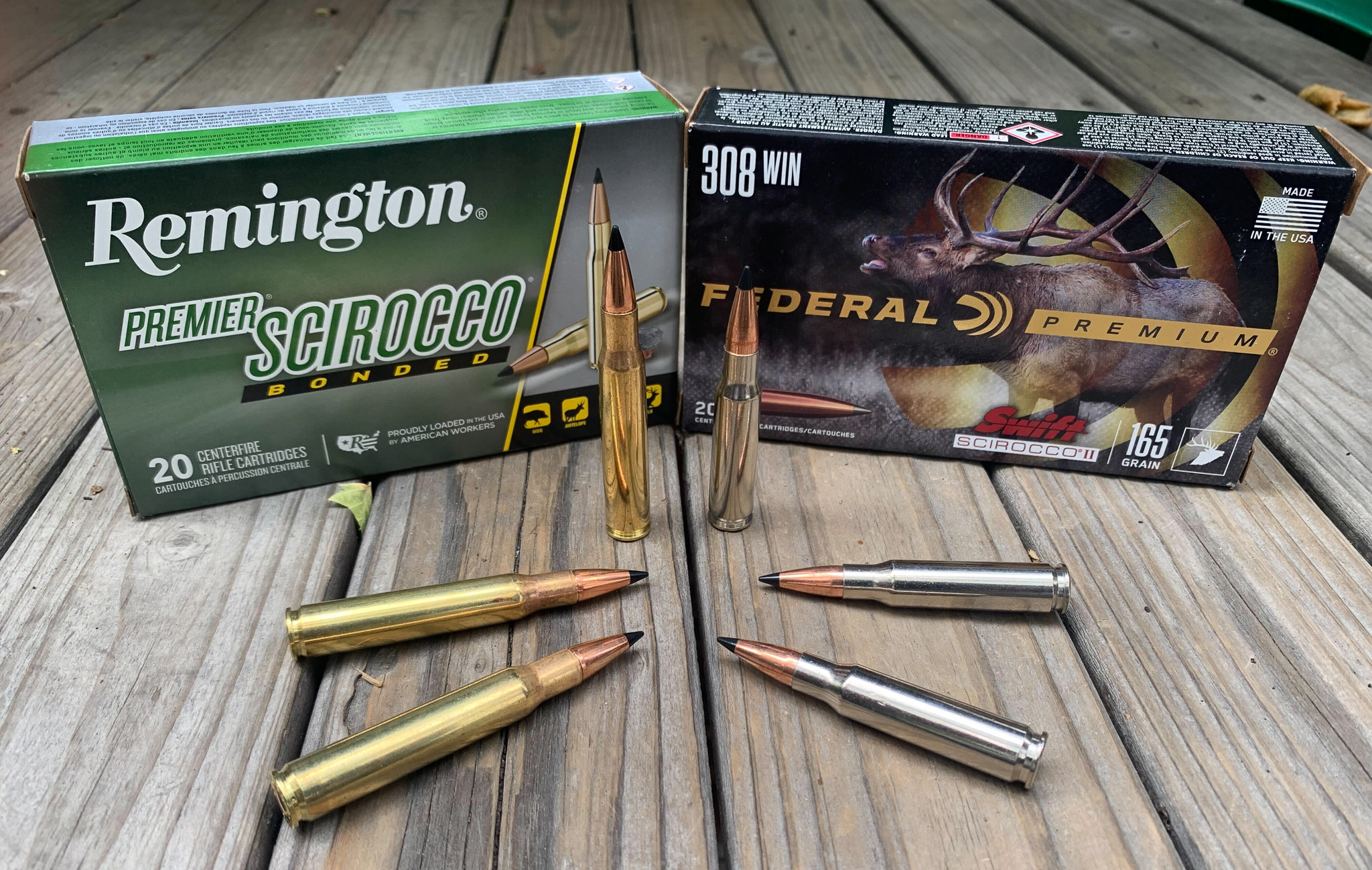
Because of this, both cartridges come with their pros and cons. For example, the .30-06 delivers a little more velocity and the .308 recoils a little less, at least generally speaking. So if you were hoping for full-throated defense of one cartridge and scathing attack of the other, well, you’ve come to the wrong place. Here’s what you need to know about the differences between the two cartridges.
History of the Two Cartridges
The .30-06 name is derived from the cartridge’s 30-caliber projectile and the year it was introduced, 1906. Its parent case is the .30-03 Springfield. At the time of its inception, the .30-06 cartridge was the pinnacle of modern ballistics, launching a 150-grain projectile 2,700 fps. The .30-06 gained its notoriety on the battlefield, playing large roles in WWI, WWII, and the Korean War. Since its adoption, the 30-06 has become one of the most common and capable big-game hunting cartridges in America and around the world.
Better performing ammunition has also improved the capabilities of the .30-06 with 150-grain bullets now regularly pushing nearly 3,000 fps. One of the many endearing qualities of the 30-06 is its ability to shoot a wide range of projectiles ranging from Hornady’s 125-grain SST bullets clear on up to Remington’s 220-grain Core-Lokt.

In 1952, half a century after the .30-06 was introduced, the .308 Winchester was born. Its parent case is the .300 Savage. The military version of the cartridge, the 7.62x51mm NATO, offered soldiers a rifle that nearly matched the ballistic performance of the 150-grain, M2 Ball .30-06 ammo, but on a lighter platform due to the short-action design. The military saw the benefits of the new cartridge and eventually replaced the M1 Garand service rifles, chambered in .30-06, with the M14 chambered in 7.62×51, aka .308 Win.
Read Next: Is the Winchester Model 70 Featherweight as Good as It Used to Be?
Along with its rise in the military, the .308 Win. also became popular among hunters favoring short-action rifles and lighter recoil.
Ballistics
Ballistically, the .30-06 shoots faster and brings more energy than the .308 Win. due to its larger case capacity. Comparing ballistics of the two cartridges side by side, however, reveals the minimal gains made shooting the .30-06. Let’s look at two examples.
Hornady Outfitter CX 150-Grain

Hornady’s new Outfitter line includes a 150-grain CX bullet, which is a mono-metal (copper alloy) projectile. Here’s what the ballistics look like from the two cartridges, given a 200-yard zero.
.30-06 Springfield
- Muzzle velocity: 3080 fps
- Drop: 6.4 inches at 300 yards
- Energy: 1955 foot-pounds at 300 yards
.308 Winchester
- Muzzle velocity: 2900 fps
- Drop: 7.4 inches at 300 yards
- Energy: 1712 foot-pounds at 300 yards
Federal 165-Grain Fusion
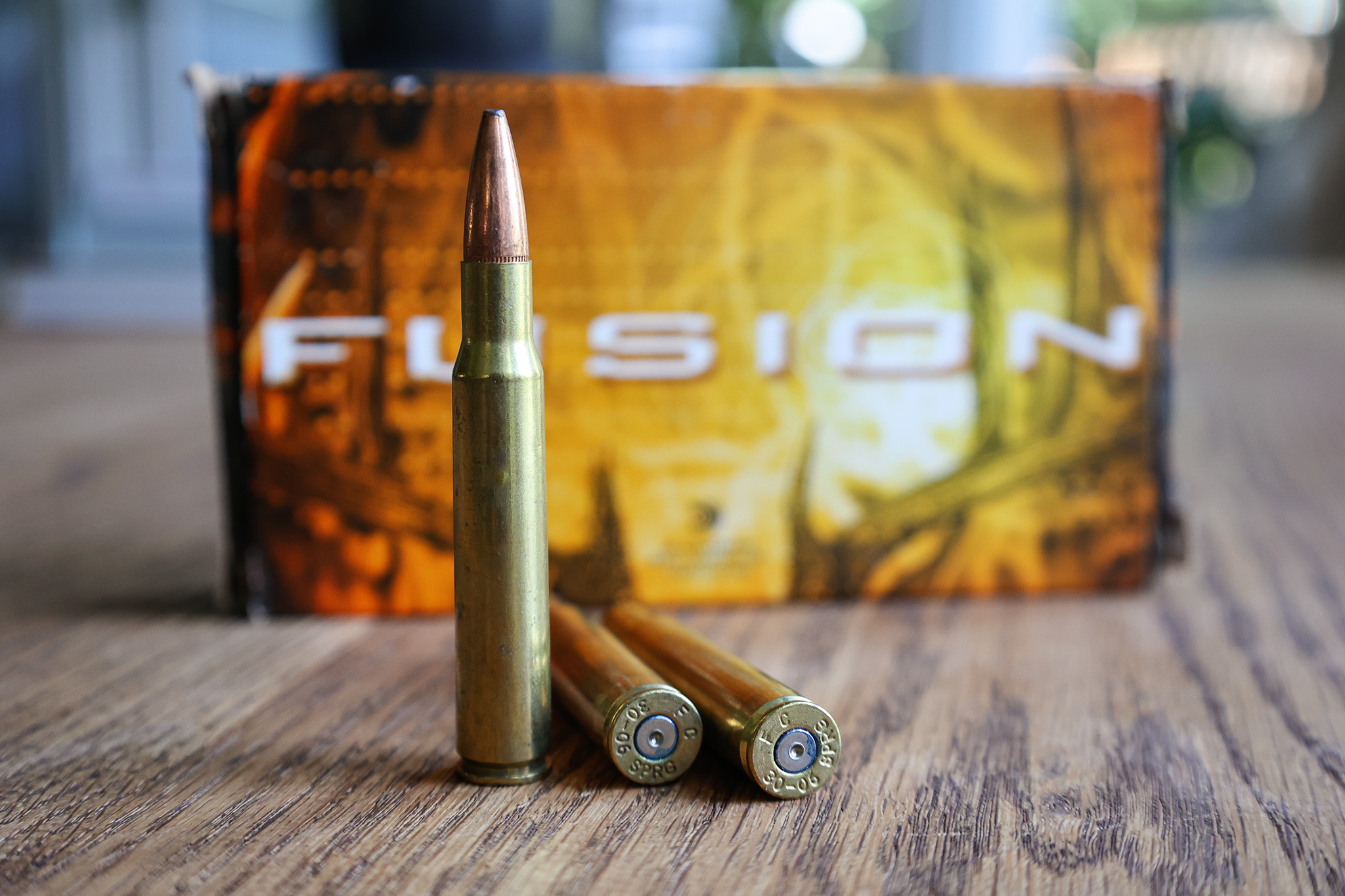
Another example that features even less difference in performance between the two cartridges is Federal’s 165-grain projectile loaded in their Fusion Line. This is again with a 200-yard zero.
.30-06 Springfield
- Muzzle velocity: 2,790 fps
- Drop: 7.9 inches at 300 yards
- Energy: 1800 foot-pounds at 300 yards
.308 Winchester
- Muzzle velocity: 2,700 fps
- Drop: 8.6 inches at 300 yards
- Energy: 1660 foot-pounds at 300 yards
Inside 300-yards, the ballistics and terminal performance of these two cartridges would be nearly impossible to distinguish between. Yes, the .30-06 does provide a slight advantage in performance but that additional performance does come at a price in terms of felt recoil, more on this in a moment.
Heavier Bullets
It’s worth noting that the .30-06 starts to pull away from the .308 as you move up to heavier bullets. For example, here’s how the two cartridges perform with a 180-grain Nosler Partition.
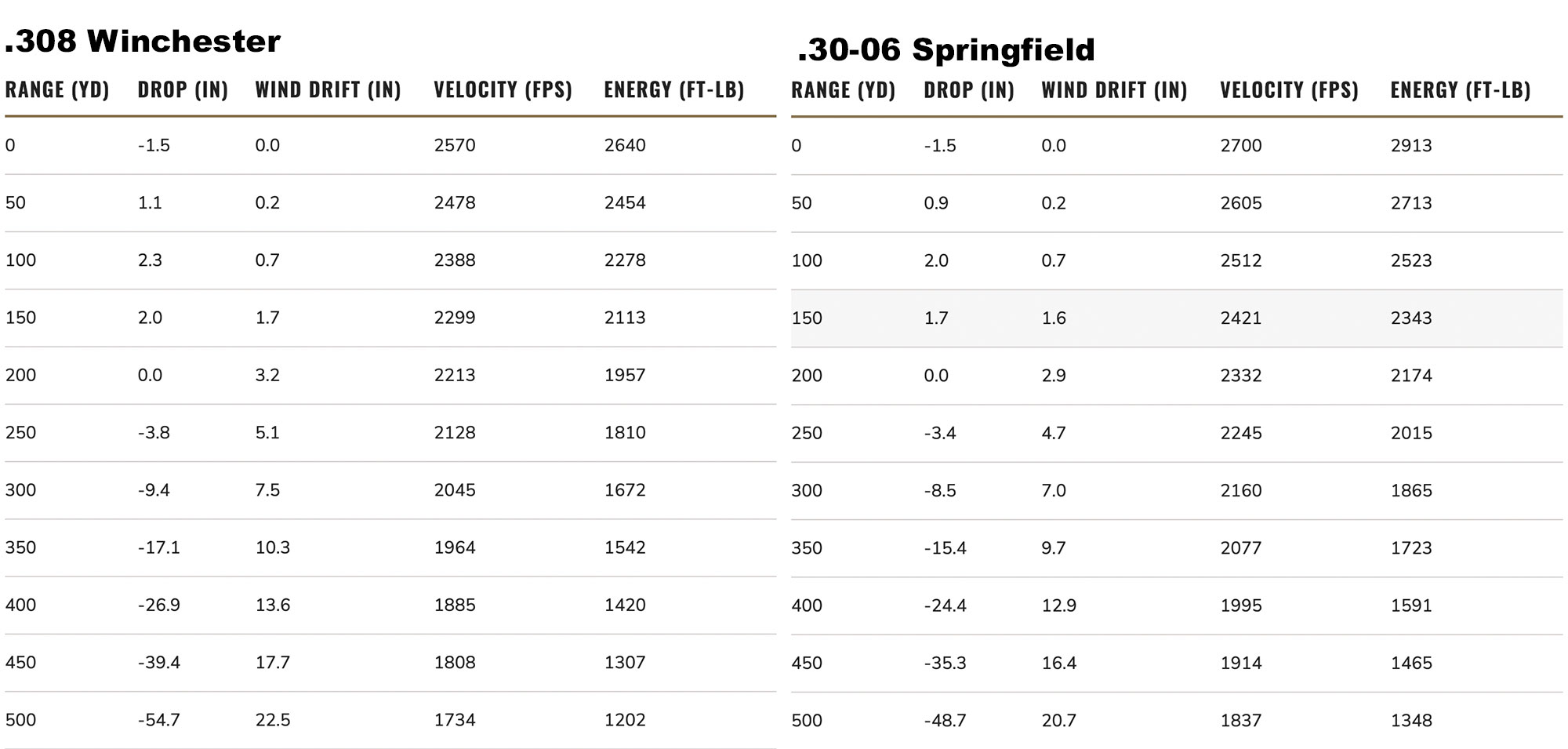
.30-06 Springfield
- Muzzle velocity: 2,700 fps
- Drop: 8.5 inches at 300 yards
- Energy: 1865 foot-pounds at 300 yards
.308 Winchester
- Muzzle velocity: 2,570
- Drop: 9.4 inches at 300 yards
- Energy: 1672 foot-pounds at 300 yards
The takeaway? The cartridges are very similar at typical hunting distances with moderate-weight bullets. But if you’re interested in shooting heavier bullets (180 grains and up) at farther ranges, the .30-06 does provide an advantage in retained energy.
Recoil
Recoil is a big deal to some and not so much to others (even though it should be). When I was younger, I paid very little attention to felt recoil, chalking it up to a necessary evil of shooting. However, the older I get, the more I shy away from heavy-recoiling firearms. Neither the .308 Win. or 30-06 are known for being light recoiling cartridges, but they are not exactly punishing to shoot in standard-weight hunting rifles. Given the larger case capacity and increased powder consumption, the .30-06 will typically produce more recoil than the .308 Win. For some very basic recoil figures, a 7-pound .308 generates about 21 foot-pounds of recoil compared to a 7-pound .30-06 generating about 25 foot-pounds of recoil. But these numbers don’t tell the full story, because the difference in felt recoil is more nuanced.
The overall weight of the rifle, stock dimensions, use of a suppressor or muzzle brake, and load combination all contribute to the amount of felt recoil a rifle produces. Due to its short-action design, rifles chambered in .4308 Win. are typically a few ounces less than the same rifle chambered in 30-06. For example a Browning X-Bolt Medallion in .308 weighs 6 lbs. 8 oz. The .30-06 version of the rifle weighs 4 ounces more.

More importantly, there are a variety of light mountain rifles available in .308, and fewer of these guns are chambered in .30-06. So if you’re looking for a light hunting rifle in .30-caliber (and don’t want the punishment of a big-booming .300 Win. Mag.) then the .308 is a good choice. Light rifles are great for backpacking but do generate more recoil.
There are certainly ways to reduce felt recoil. While I loathe muzzle brakes, they do serve their purpose and reduce the amount of felt recoil for both cartridges. Even better, suppressors provide the same benefit of recoil reduction while saving our ears from the abuse of a muzzle blast.
Read Next: Why the .308 Winchester Will Never Die
Accuracy
The definition of an accurate rifle varies from shooter to shooter. Regardless of what your definition is, both the .308 Win. and .30-06 are capable of producing accurate results for hunting purposes. From a purely anecdotal point of view, I have had better success getting rifles chambered in .308 Win. to shoot sub-MOA than I have those chambered in .30-06. But remember, that’s an anecdote, not hard data. I think the reason that the .308 consistently out shoots the .30-06 in terms of accuracy is because of its more efficient cartridge design.
Given the modern advancements in rifle and ammunition manufacturing, there are plenty of factory rifles chambered in both cartridges that will shoot factory ammunition sub-MOA in three-shot groups and near MOA in five-shot groups. In Tyler Freel’s test of the best mid-priced rifles, he found that the best rifles shot about 1.3-inch, five-shot groups (this was done after averaging the 10 best groups from each rifle).
Read Next: The Best 308 Hunting Rifles
The vast majority of rifle companies all chamber and sell rifles in both .308 Win. and .30-06 due to their widespread popularity. The same can also be said for ammunition companies with .30-06 and 308. Win. ammo being among their top selling SKUs every year.
Terminal Performance
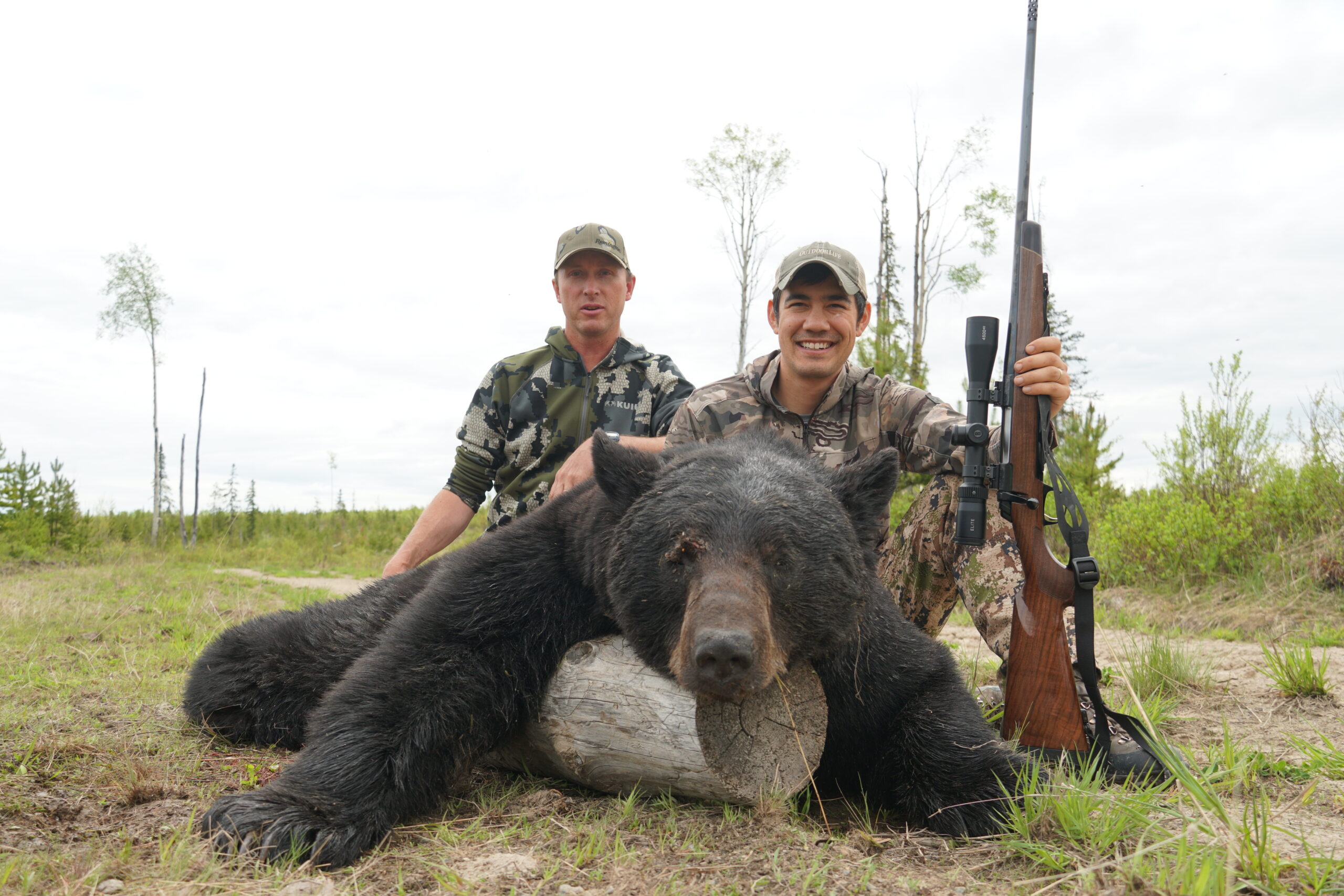
We already established that the .30-06 shoots a tad faster and subsequently packs more punch than the .308 Win. However, dead is dead and the buck or bull you settle your crosshairs on this fall will not know whether they were shot with a .308 vs .30-06. Instead of cartridge choice, hunters should focus on bullet construction when trying to maximize terminal performance. Thanks to the booming popularity of both of these cartridges, hunters have a smorgasbord of killer bullet options to choose from.
For maximum penetration on bigger game, shoot solid mono-metal bullets. Some of my favorite mono-metal projectiles include Hornady’s CX, Nosler’s E-Tip, and Winchester’s Copper Impact.
For an all-around capable big-game option, you can’t go wrong shooting a bonded bullet such as Nosler’s Accubond from either the .30-06 or .308 Win. Thin-skinned deer and pronghorn can be hunted with ease with both cartridges with just about any hunting bullet, though many prefer a rapid-expanding projectile to maximize internal trauma.
Ammunition Availability and Selection
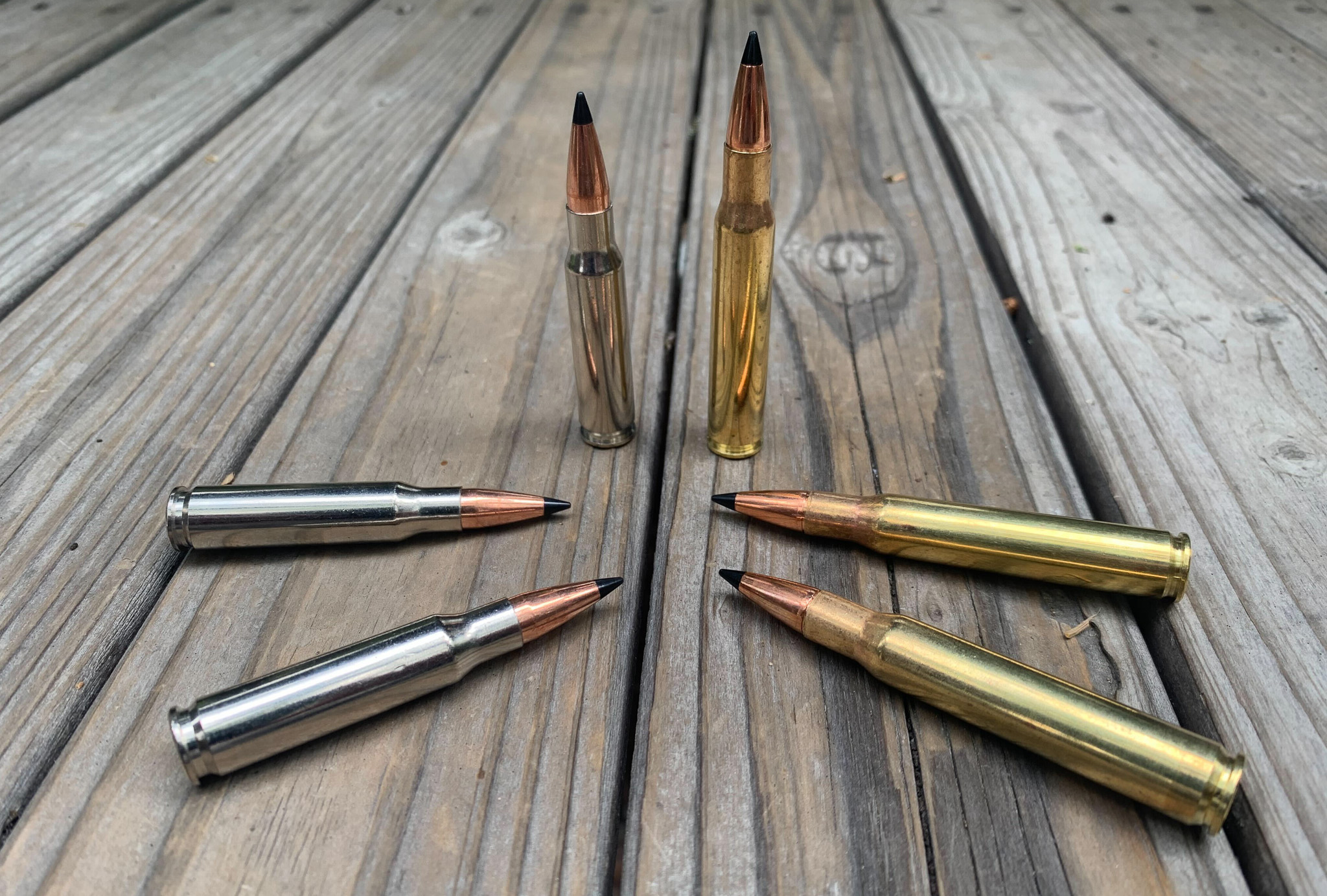
One of the biggest advantages to shooting both the .30-06 and .308 Win. is that ammo is almost always readily available. Even during the recent ammo shortage, .30-06 and .308 Win ammo could still be found. Cost varies based on ammunition brand and bullet type, but generally the .308 Win and .30-06 ammunition share similar price tags. For example, a box of 20 .308 Win. 150-gr. Remington Core-Lokt is listed on Midway USA for $28.99. That same box of ammo for the .30-06 is listed for the exact same price of $28.99. Average price for a box of 20-rounds for both cartridges will hover between $35 and $40.
And there are a ton of options to choose from. On Midway USA alone, both cartridges had more than 100 ammunition options from a wide variety of manufacturers and bullet configurations.
Read Next: The Best .308 Hunting Ammo
One of the endearing qualities of the .30-06 is its ability to shoot heavy-for-caliber projectiles. The .308 Win. can also shoot many of those same heavy bullets, but you’ll have a harder time finding factory hunting ammo loaded with 190-grain bullets or heavier.
Final Thoughts on .30-06 vs .308 Win.
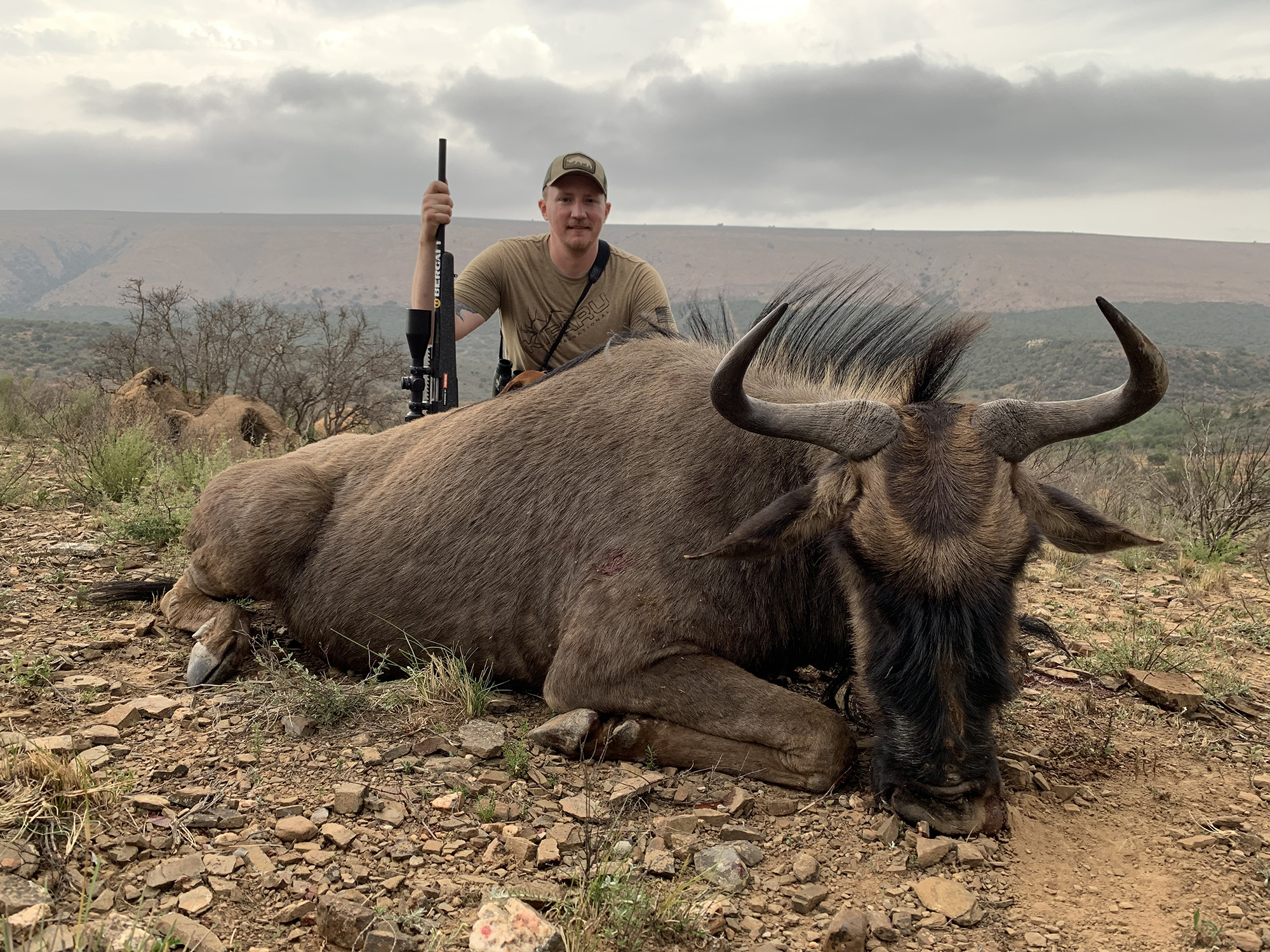
The truth is that you can’t go wrong with either of these cartridges when selecting your next big-game hunting rifle. Both carry ample killing power and provide hunters with a wide range of ammunition options to effectively target everything from dainty pronghorn to massive bull elk. Given a similar rifle configuration, the .308 Win. will exhibit slightly less recoil and is inherently more efficient than the .30-06. But, no matter how hard people try to convince you otherwise, the .30-06 will deliver greater velocity and energy, all other factors being equal. The .30-06 also possesses the ability to better stabilize and accurately shoot the extremely heavy-for-caliber bullet offerings with its faster twist rate.
It’s also important to note that there are plenty of new cartridges utilizing modern cartridge design that outperform both the .30-06 and .308 Win. However, the history and nostalgia surrounding these two cartridges has made them a piece of Americana history that hunters and shooters refuse to let slip into the “has been” category. Expect to see them side by side in hunting camps and on gun store shelves for many years to come.
The post .308 vs .30-06: Is One of These Classic Cartridges Really Superior? appeared first on Outdoor Life.
Articles may contain affiliate links which enable us to share in the revenue of any purchases made.
